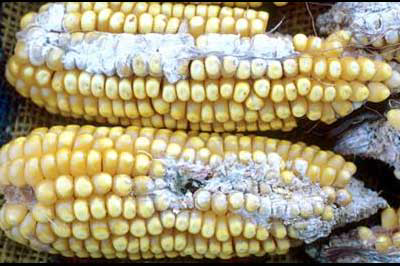Alltech launches mycotoxin management program

Molds and mycotoxins dominated headlines last year as the ever-present threat showed up in feed bunks and silage piles in the aftermath of the 2012 drought in Australia and the floods in the Philippines or South China. While warnings were continuously issued on contaminated grains, many livestock producers were left with little information on the actual risks associated with these toxins on their own farms.
With this dilemma in mind and a goal to bring the latest mycotoxin research applications to the farm level, Alltech is proud to announce the launch of their five-point Alltech Mycotoxin Management Program. This multiple-mycotoxin control program for feedstuffs is designed to reduce risk and improve safety, while ensuring that mycotoxins do not limit livestock performance and profitability, or pose a threat to the food chain.
Alltech formed a global mycotoxin management team more than a year ago to focus on developing tools to diagnose mycotoxin risk more accurately, to create a network of mycotoxin consultants and researchers around the world and to develop technologies to manage the menace of multiple mycotoxins. This five-point approach encompasses all of the company’s efforts to redefine mycotoxin control and no longer address single mycotoxin issues but mycotoxin synergy problems.
“For three decades, we have believed that animal feed seldom contains a single mycotoxin. Although many mycotoxin interactions have been proven in academic settings, it has been difficult to understand such interactions due to the lack of extensive mycotoxin testing,” said Dr. Nattawadee Jantasila, researcher, Alltech Asia-Pacific. “Over the last four years, our scientists have developed the 37+ Program, wherein more than 37 mycotoxins can be quantified in a single run. This program involves the application of UPLC-MS/MS methodologies, which not only help in assessing multiple mycotoxins in a more accurate manner but also allow the analysis of a wide range of feedstuffs, including forages, which may not be possible with conventional methods such as ELISA and HPLC.”
To date more than 1,000 samples from all over the world, with Asia-Pacific being the predominant region with over 500 samples, have been subjected to the 37+ Program. Ninety-eight percent of the samples tested contained at least one mycotoxin while 93 percent contained two or more mycotoxins. Fumonisins (80 percent) and the DON group of mycotoxins (73 percent) were the predominant mycotoxin groups detected. When looking at the average concentrations, these two groups of mycotoxins along with T-2 group and zearalenone can cause the most toxicity in animals.
“We created the Alltech Mycotoxin Management Program with the livestock producer in mind,” said Nick Adams, global sales director for the Alltech’s Mycotoxin Management Team. “Its aim is to create a complete and transparent view of daily operations on a working farm from the field to the feed mill to the feed bunks.”
Alltech’s Mycotoxin Management Program offers five key components for farms concerned with mycotoxin contamination:
1. The 37+ program analyzes for multiple mycotoxin contamination in a given feed sample.
2. The program also provides a risk assessment and calculates the toxic equivalent quantity (toxicity times the quantity of mycotoxins) for that particular feedstuff sample.
3. Alltech has developed proprietary techniques to demonstrate how utilizing the Mycotoxin Management Program can help to reduce the threat posed by multiple mycotoxins.
4. The Mycotoxin Hazard Analysis Program (MIKO) from Alltech is designed to help improve production systems on farm and at feed mills by performing an audit; determining the critical control points; and establishing critical limits, monitoring procedures, corrective actions, checking procedures and protocols for recording information.
5. Finally, the mycotoxin management team provides a complete contamination report and recommendations for management and nutritional applications that can assist with mycotoxin prevention and control.
“An effective mycotoxin management program should be integrated and personalized to each farm. The factors influencing mycotoxin production and their negative effects on animals are not constant across all operations,” Dr. Nattawadee Jantasila said. “A farmer who produces his or her own feedstuffs has much better control on mycotoxin issues than a farmer who buys feedstuffs. Various management programs, such as MIKO, can be implemented while growing crops in the field, during storage of feedstuffs, producing feed in the mills, and while feeding in barns. Even if it’s too late to implement some of the mycotoxin prevention procedures, supportive treatments can still be implemented to minimize overall losses.”








